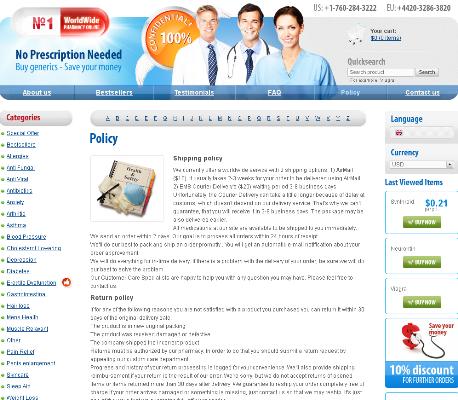Cytotec Interactions with Other Medications and Contraindications
Common Drug Interactions You Need to Know
Think of Cytotec like a sensitive instrument in a crowded orchestra: when other drugs join in, the tune can shift. Pain relievers such as NSAIDs may amplify gastrointestinal irritation while blood thinners raise bleeding risk; certain antacids and acid suppressors can alter absorption. Even commonly prescribed antidepressants or anticonvulsants may change how quickly misoprostol is metabolized, so your clinician should review every med, supplement and herb you take.
Tell your provider about OTC painkillers, herbal remedies and supplements; St. John's wort can lower effectiveness and antiplatelet drugs raise bleeding concerns. Occassionally interactions are predictable and simple to manage by altering dose or timing, but some require close monitoring or substitution. Pharmacists can reconcile medication lists and advise on signs to watch for, such as increased cramping, bleeding or diarrhea. Keep communication open and ask for a plan if changes are advised.
| Drug class | Potential interaction with misoprostol |
|---|---|
| NSAIDs | Increased GI irritation and ulcer risk |
| Anticoagulants/Antiplatelets | Higher bleeding risk |
| Antacids/PPIs/H2 blockers | May reduce absorption or alter timing of effect |
Dangerous Combinations to Avoid during Pregnancy

A quiet clinic corridor once felt like a crossroads to a patient whose medication list read like a map of hazards. Clinicians warn that mixing cytotec with certain uterotonics or prostaglandin analogs can amplify uterine contractions and risk fetal distress; combining it with misoprostol for induction while on oxytocin needs close supervision. Teh outcomes can be severe without careful dosing and monitoring.
Equally dangerous are interactions with anticoagulants or NSAIDs that increase bleeding risk, and with abortifacient regimens where timing errors magnify harm. Antidepressants and seizure meds may alter drug metabolism, changing effective levels. Always disclose every prescription, OTC, and supplement to your provider so teams can make informed, pregnancy-safe decisions for mother and baby.
Blood Thinners and Bleeding Risk Explained Simply
A simple story: a woman on anticoagulants hesitated when offered cytotec, and her clinician explained risks calmly. She felt relieved after a simple risk discussion that balanced benefit and bleeding potential.
Anticoagulants, antiplatelets or NSAIDs can increase bleeding with uterine agents; monitoring, dose review and timing adjustments lower danger. Close follow-up and tailored decisions reduce harm.
Teh message is practical: never self-manage anticoagulation, ask about bleeding signs, and make sure emergency steps are clear before treatment. If bleeding begins, seek urgent care; labs and reversal options can often be lifesaving.
Antacids, Acid Reducers and Absorption Concerns

At a clinic I saw a patient who used an over-the-counter stomach reliever before taking cytotec; she reported weaker relief and odd cramp timing. Shifts in stomach acidity can change how quickly oral drugs dissolve and enter the bloodstream, so small changes may affect outcomes.
Medicines that neutralize or lower gastric acid can alter dissolution and gastric emptying, modifying the onset and intensity of effects. In some people the tablet may be less effective and side effects like nausea or diarrhea become pronounced; Teh result can be unpredictable for clinicians.
To minimize risk, clinicians often advise separating doses when possible and monitoring response; spacing by a couple of hours can help, and documenting any diminished effect is wise. If you notice changed response, contact a healthcare professional for tailored advice — small timing changes can make a big difference, Occassionally.
Interactions with Labor Agents and Uterine Effects
In active labor, combining uterotonic drugs can change contraction patterns; cytotec often intensifies uterine tone and may speed labour.
Pairing it with oxytocin or other prostaglandins risks excessive contractions and fetal distress; timing and dose matter greatly.
| Agent | Effect |
|---|---|
| Cytotec | Increased contractions |
Clinicians monitor patterns continuously; if hyperstimulation occurs, immediate interventions and possible tocolysis are needed to protect mother and baby. Discuss prior cesarean, placenta issues and allergic history before giving medication; coordinate teams to reduce complications and ensure safe delivery. Occassionally urgent C-section may be needed; notify neonates immediately.
Who Must Avoid Use: Critical Contraindications Explained
Imagine a clinical moment when a prescriber hesitates; certain conditions make use unsafe. Active cardiac disease, severe asthma, or known allergy raise immediate concern.
Patients with prior major uterine surgery, ectopic pregnancy risk, or inflammatory bowel disease need tailored approaches and often alternative therapies.
Concomitant steroid use, blood pressure meds, or other prostaglandins can amplify effects; clinicians weigh history, labs and teh clinical exam closely.
Pregnant people must never combine with oxytocin outside supervised settings; severe anemia or bleeding disorders also contraindicate use. Discuss risks openly for safety. WHO DailyMed
<

